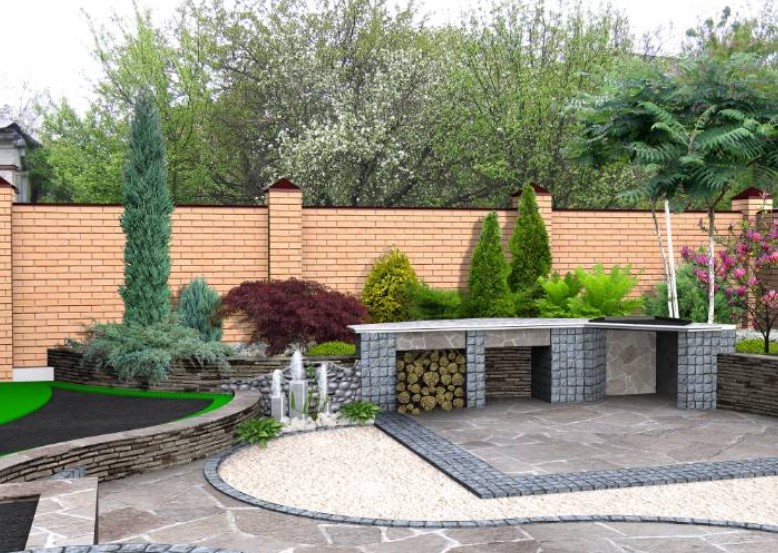Stamped concrete is a great way to add curb appeal, color, and style to your home. It’s also durable and low-maintenance, which makes it a great choice for front porches, driveways, patios, and more.

Your stamped concrete contractors in St. Paul want you to know that they’re more than just your average concrete company. They are passionate about the craftsmanship of their work and the care they put into each project. They want you to know that they’ll work hard to make sure that your stamped concrete project is exactly what you want it to be, and they will stand by their work after it’s done.
Here are five things your stamped concrete contractors in St. Paul would like you to know:
All Concrete Cracks
Whether you pour a concrete driveway, sidewalk, or patio, it’s going to crack. It could be days after you pour it or years—but it will happen.
Control joints are a way to try and control where that cracking happens. A control joint is basically an area where the concrete has been made weaker than the surrounding concrete. By creating this weak spot, we hope that the concrete will crack there instead of somewhere else—but concrete is never predictable!
You Have to Pour Stamped Concrete on A Sunny Day
Stamped concrete is an affordable, durable and beautiful way to upgrade your outdoor space. It is also a popular choice for patios, walkways, and driveways.
When it comes to stamped concrete, there are many things you should know before deciding if this is the right option for your home. One important thing your St. Paul contractor wants you to understand is that stamped concrete must not be poured if there’s rain. If there’s even a chance of rain, a contractor will not pour, finish, or seal stamped concrete. Too much water affects the color, consistency, texture, and time the concrete takes to cure. The temperature also affects the concrete. If it’s too cold, it’ll take concrete longer to harden, and on the other hand, if it’s too hot, it’ll harden too fast. If it hardens too quickly, it shortens the time the contractor has to apply colors or stamps. Curing too slow or too fast decrease the structural quality of the concrete.
Each Batch of Concrete is Unique
In St. Paul, we strive to give our clients the best results possible with their concrete projects, and we try to be as upfront as possible about what to expect.
Each mix of concrete is never exactly the same in color, and it’s not something we can control. We can select the same color and stamp for your porch and your neighbor’s porch, and they’ll still look entirely different. There are additives in the concrete that are different based on the supplier of the concrete and the day of the mix. The amount of color or the way it was added is never the same.
Colors like brown and grey tend to look better than those like terracotta which take on a pinkish tinge, and the consistency isn’t as good as we like. When our clients are selecting concrete colors, we like to give them our honest answers, and we’ll never tell you something just because we think you want to hear it. However, in the end, it’s your home and your choice!
Integral Color, Applied Color, and Acid Washes/Stains
Integral Color in concrete is the term used to describe the process of adding color to the concrete mix rather than using a separate coating on top of the finished product. This can be done in several ways: adding pigment directly into the mix, spraying or brushing on colored coatings, and adding wax or stain that can be applied after pouring.
Applied color in concrete is a process where a coloring agent is added to the concrete before it dries. It is different from pigmented concrete, which adds color to the surface of a hardened concrete product.
Acid wash or stains Color in concrete is a chemical treatment that can be used to alter the color of concrete. Acid wash or stains are typically applied when the concrete is still wet, so they can penetrate deeply into the pores of the concrete and react with its minerals. The reaction produces a new color as well as a protective layer on top of the concrete’s surface.
Stamped Concrete Can Cover Your Existing Concrete
If you have an existing concrete porch, but it’s no longer in good condition or you want something new, you can. Your existing concrete can be covered with a stamped overlay giving you great results as traditional stamped concrete.
Stamped overlays are a great alternative to traditional concrete because they are less expensive and easier to install. They create the look of stamped concrete without the expense or mess of installing new concrete.
Find Your Stamped Concrete Contractor Today
When looking for a stamped concrete contractor in St. Paul, make sure you talk to at least three of them and make a list of questions to ask them. You can ask friends and family or even use online resources such as HomeAdvisor.com.
